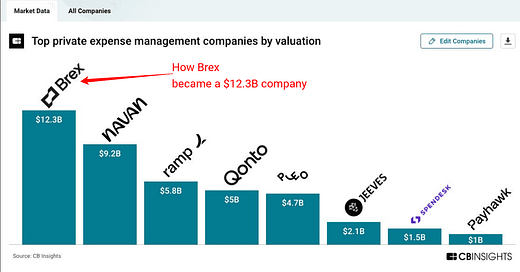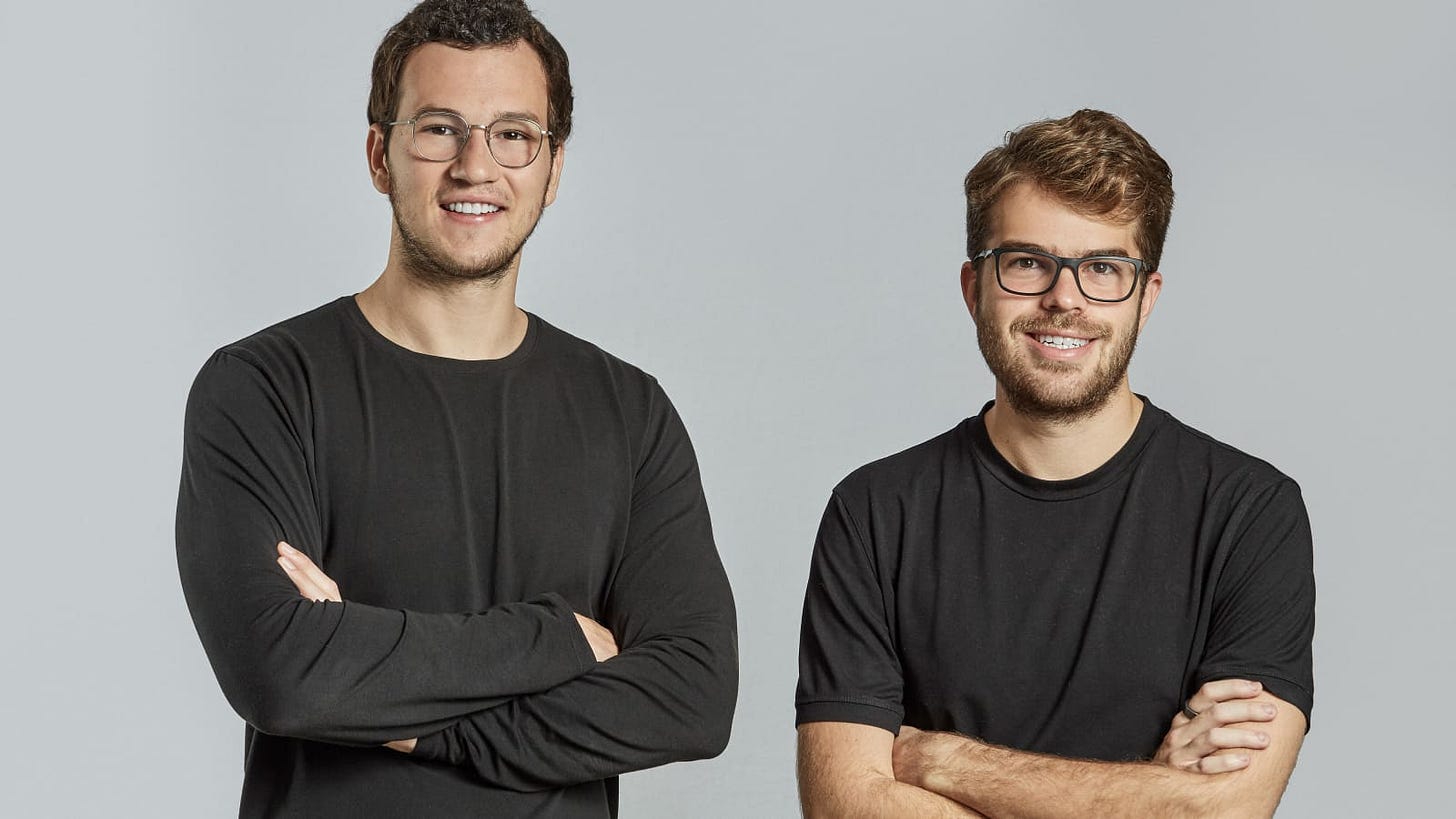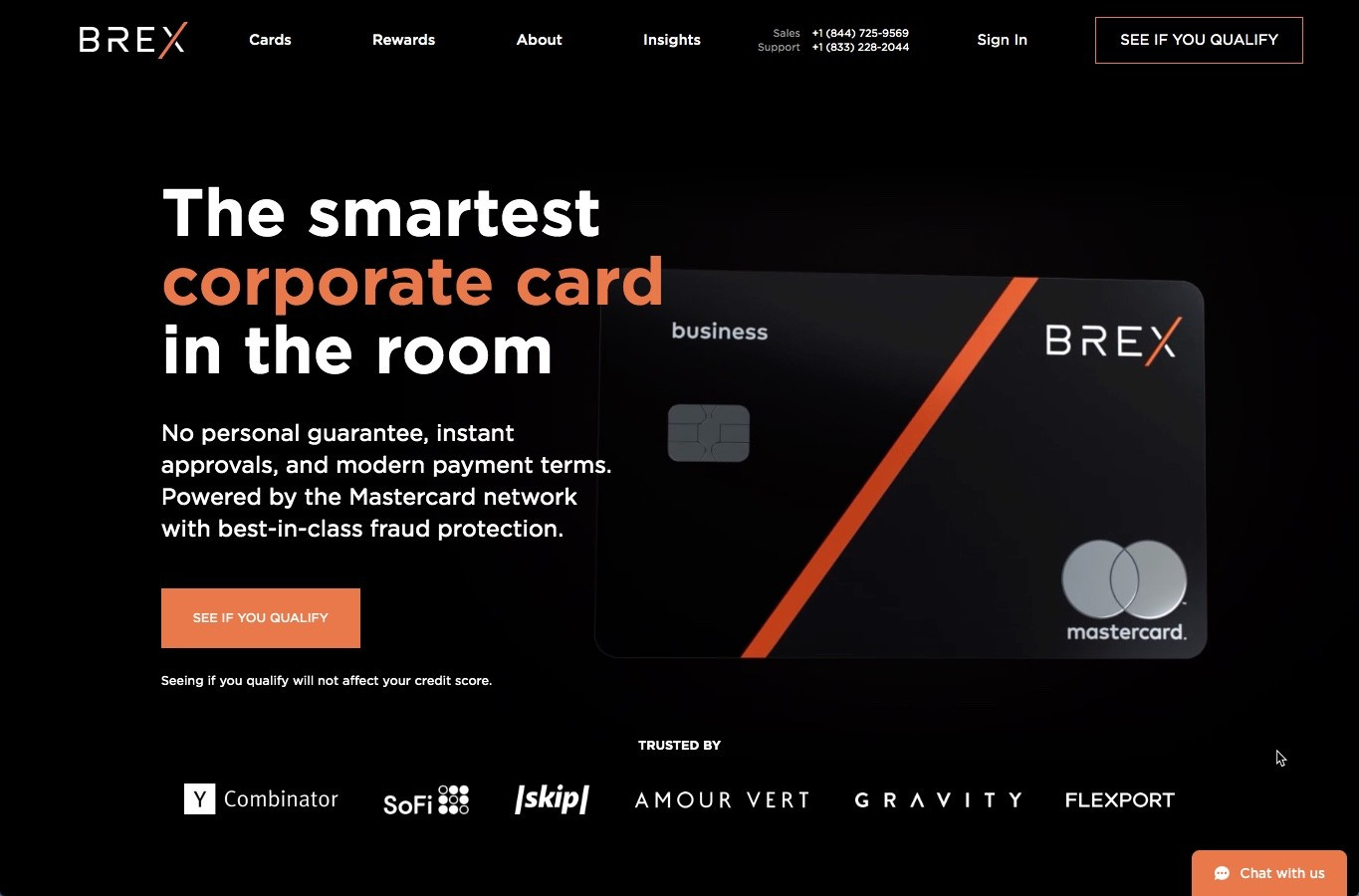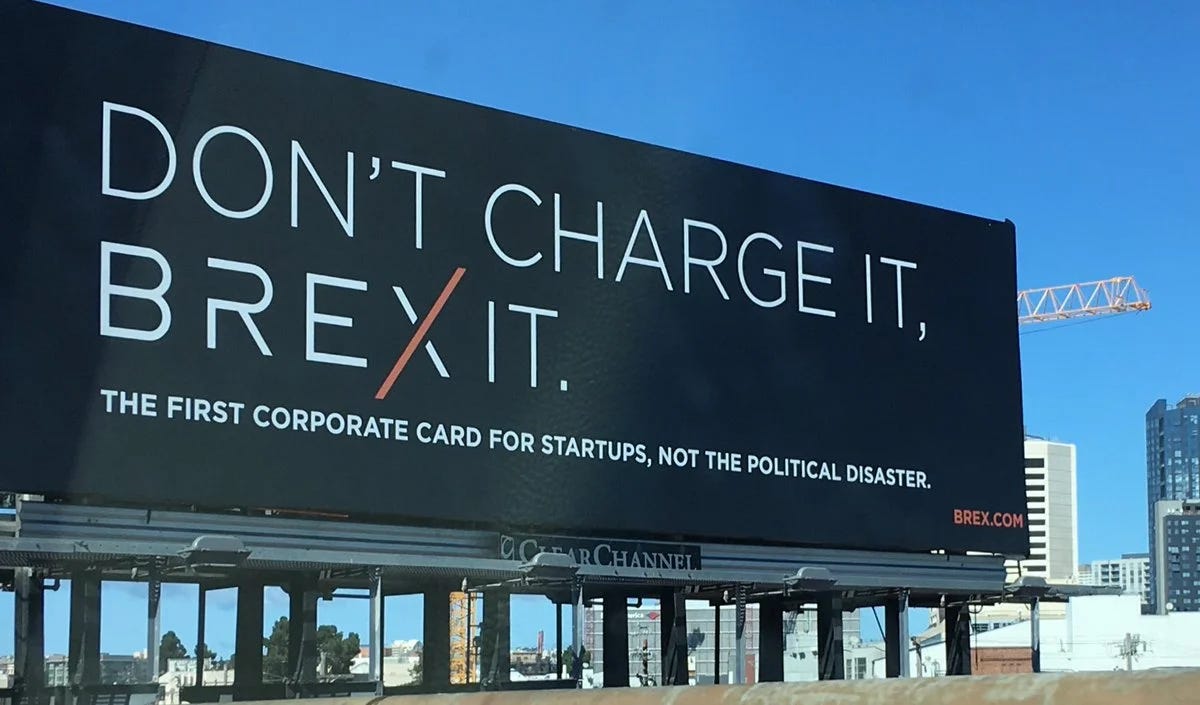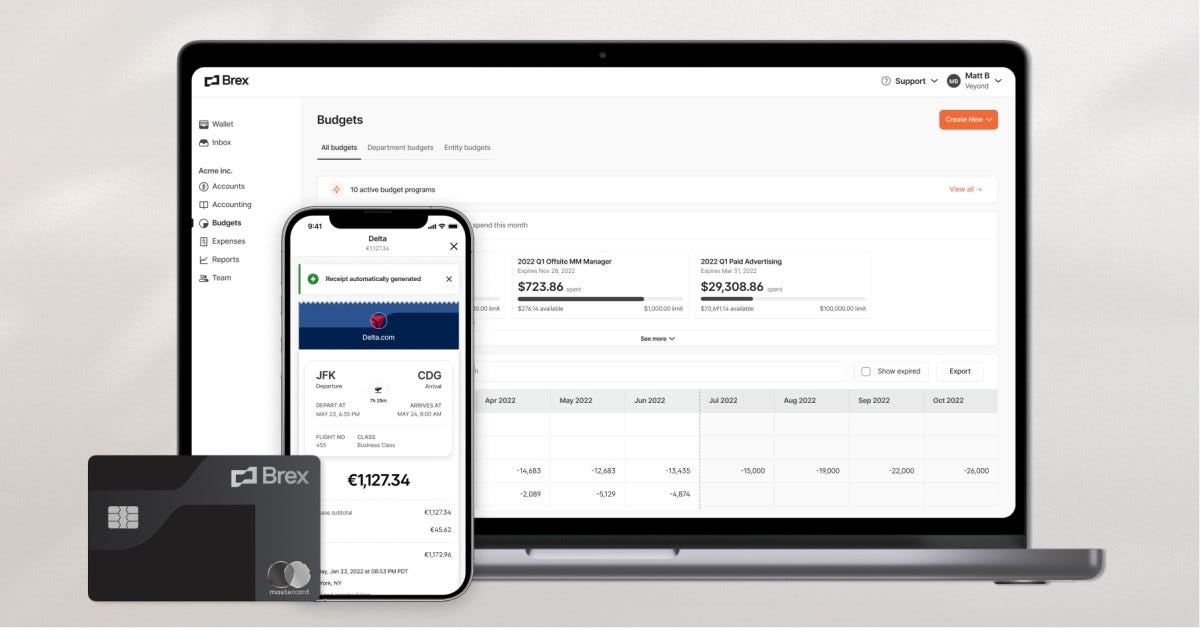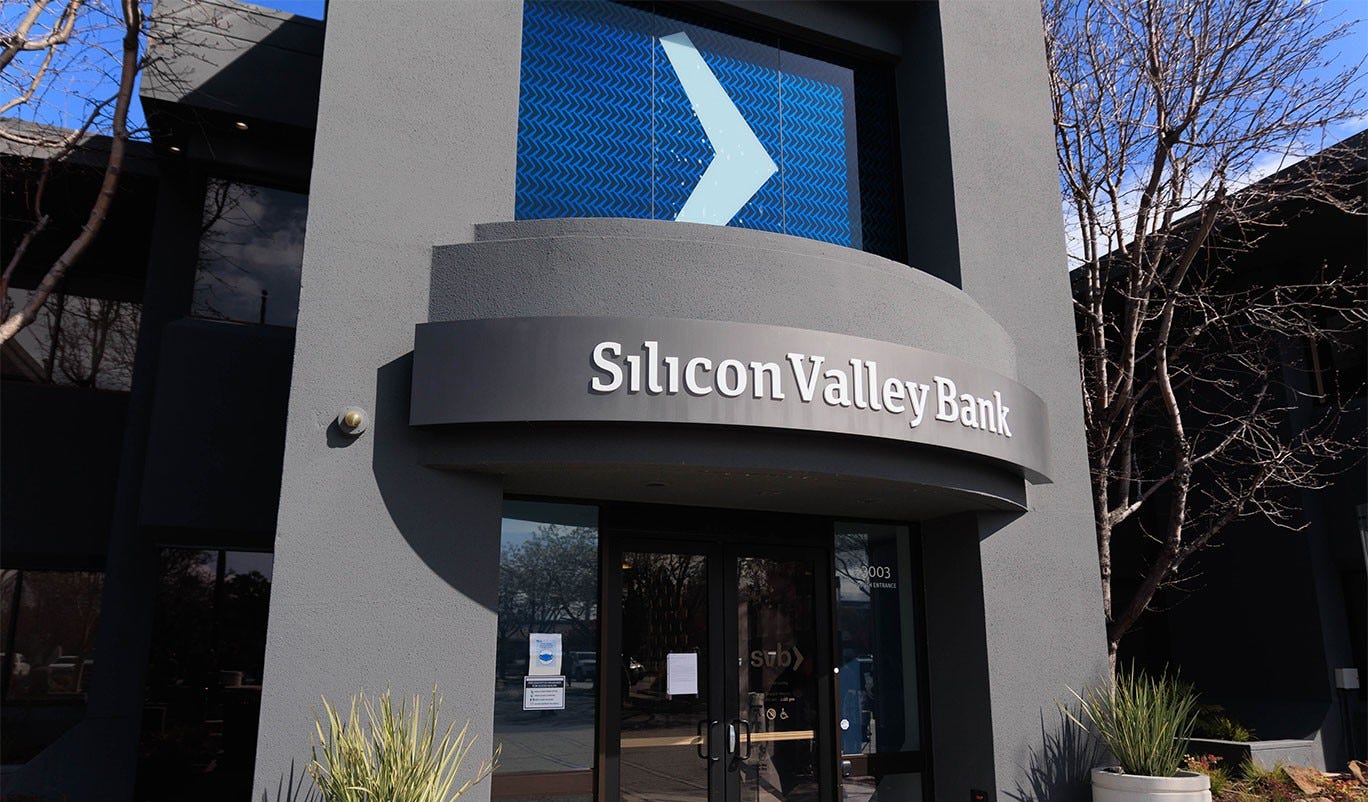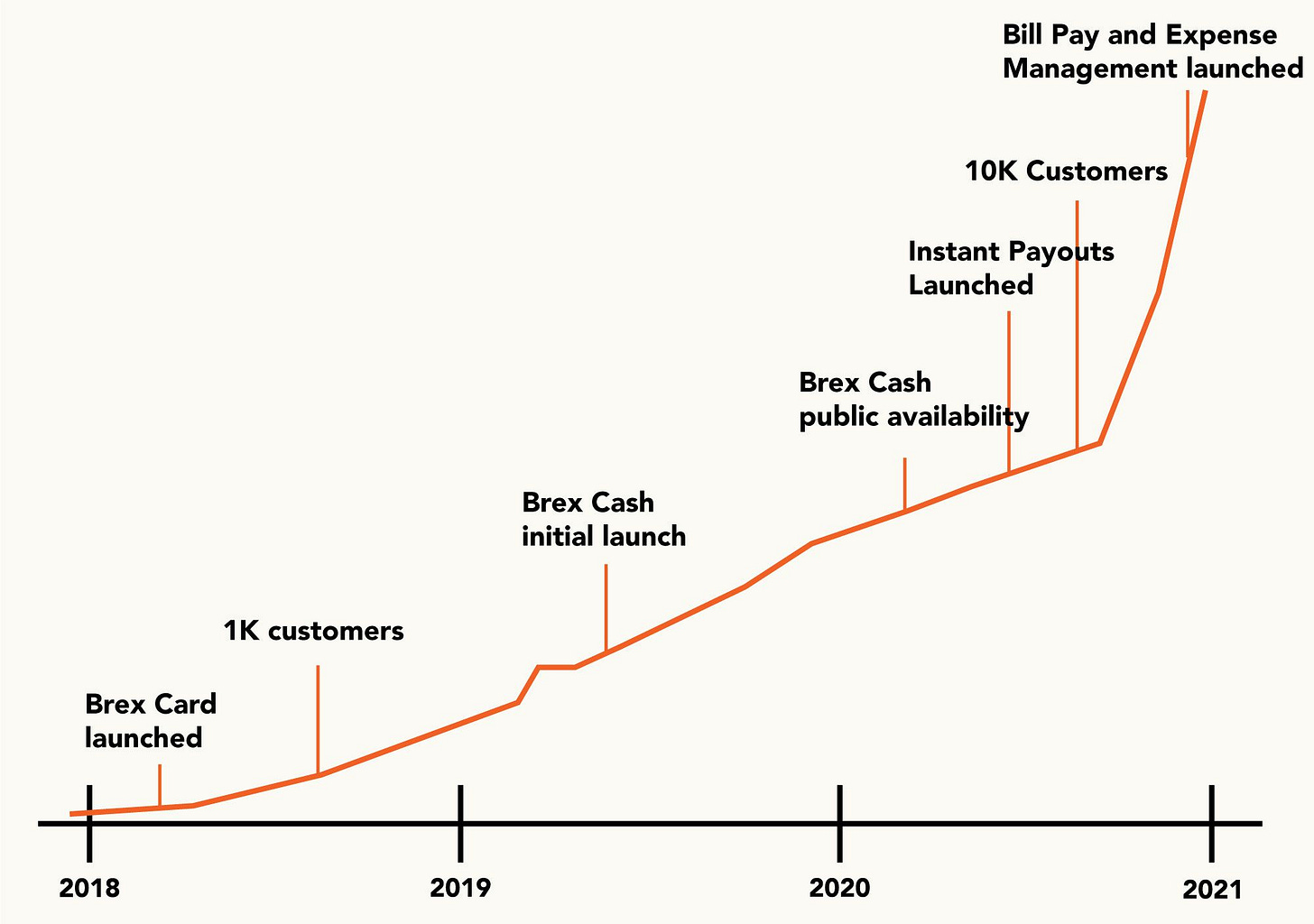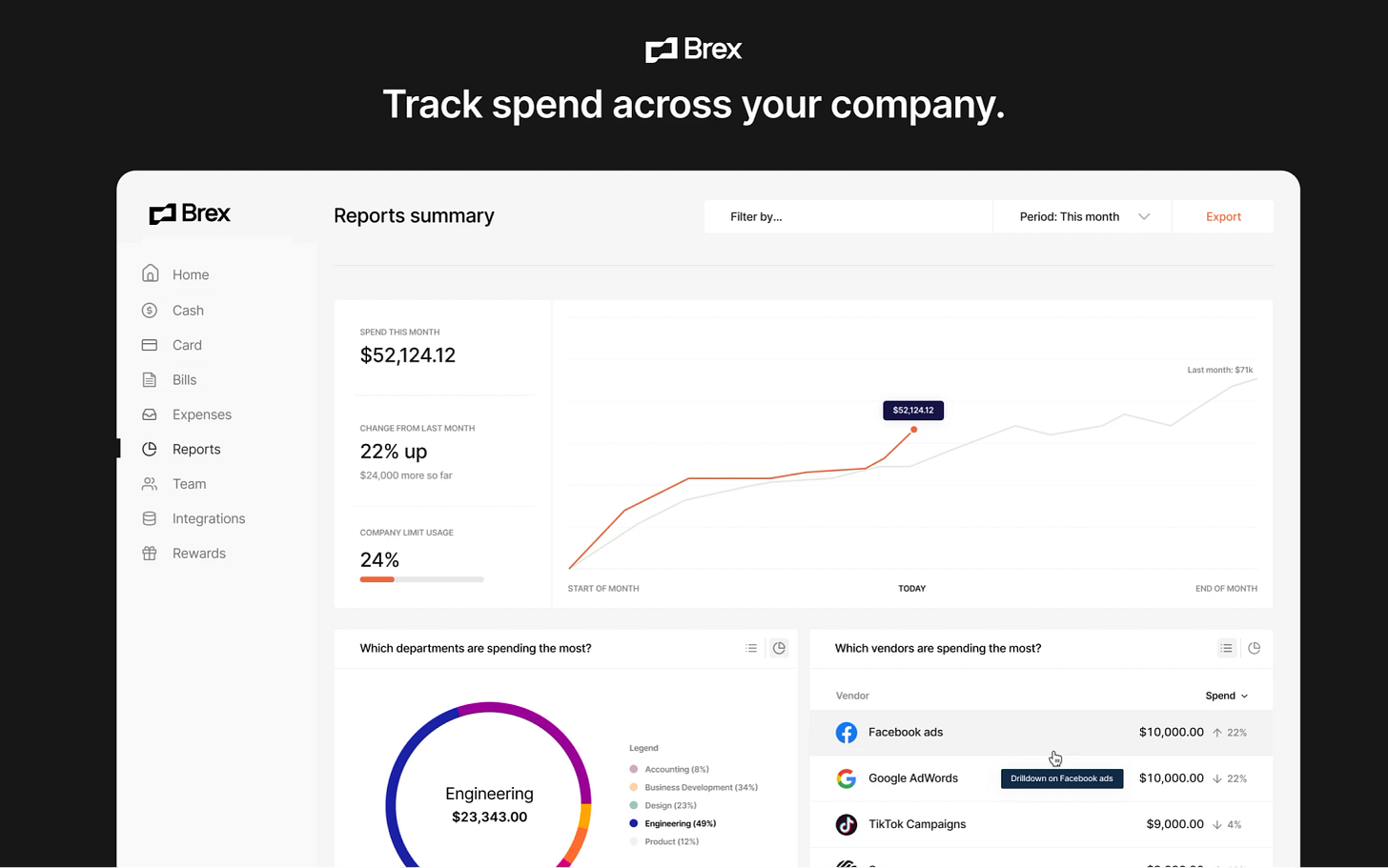Friends,
Brex has become the default financial services partner for startups coming out of Silicon Valley. In just 6 years, 80% of Y Combinator companies use Brex, while 33% of the top 50 venture firms ' portfolios & 25% of all US startups use Brex. It has raised $1B+ in equity, serves 20,000+ clients and has done $40B + in overall transaction volume since its launch in 2018.
Here is how Brex became a $12.3B company in just 6 years.
Brought to you by:
Market Curve is a B2B SaaS product marketing studio run by me (Shounak) that helps brands tell compelling stories across the entire marketing funnel. The goal is to optimize & grow your user acquisition, engagement & retention.
Here is the stuff I am good at:
Website & landing page copy
Blogs/Essays/Newsletters (like this one)
Onboarding flow optimization
Drip/nurture/churn email sequences
Marketing/Sales assets like decks, e-books, guides, case-studies
Product UX copy/design
Social media/ghostwriting content for busy founders/execs
Submit as many requests as you want for a fixed monthly fee and get your requests fulfilled one at a time. Pause or cancel anytime.
Wanna explore what this looks like for your business?
Brex - The Founding Story
Brex was founded by two Brazilians from Rio - Henrique Dubugras and Pedro Franceschi. Together, in their teens, they launched and sold a fintech company called Pagar. They then moved to SF and applied to YC with their idea Veyond - a VR product.
But as they got deep in the weed, they figured they didn't have what it takes to be a successful VR company. At YC, Michael Siebel asked the founders - if you could build anything, what would you build? The founders replied - A business bank.
The problem was something they faced first hand. Despite receiving investment, startups struggled to get a corporate credit card. Traditional banks were slow, manual, with archaic digital interfaces. Worst of all, they didn’t know how to underwrite early-stage businesses with no credit history.
MVP & Early Traction
The founders scoped out their MVP - Build a corporate credit card for startups. They chose to build the full credit card processing stack from scratch instead of relying on third party processors. This gave them flexibility & prepared them for scale from day one. For the MVP, they focused on just a few features like fast sign up, higher limits without personal guarantees, and automated receipt capture.
Franceschi constructed Brex’s backend from scratch, coding the core card processor, KYC functionality, underwriting engine, and connective tissue to Visa and Mastercard.
The founders focused on friends and family that were either founders or finance people at small companies. They also scraped LinkedIn for contacts of thousands of foreign founders (who typically lack FICO scores and struggle to get credit cards) & emailed them if they would be interested in the product. They had 85 pilot customers doing this.
The founders engaged directly with these pilot customers & interviewed them about their biggest pain points to refine the features. When talking to users, the founders discovered that not having a personal guarantee was something people cared about. Having higher limits was something people cared about. So was fast onboarding - users wanted to get a card in 5 minutes.
They iterated based on feedback from these users & Brex delivered its first cards to the pilot customers in four months. Customers were approved for a corporate credit card in just 24 hours with no manual paperwork or in-person visits needed. By underwriting companies based on their capital, Brex increased credit limits 10-20x more than what was offered by traditional banks like American Express. And the founders were not personally liable. Brex had built something their customers wanted.
In early 2017, weeks before YC’s Demo Day, Ribbit Capital led a $7 million Series A into the company. The same year, Brex made their first hire, their Chief Revenue Officer - Michael Tannenbaum. By July 2017, Brex had recruited a stellar executive, closed a Series A, and gotten a corporate credit card into the hands of 85 customers.
One of the things Henrique did to raise funds was to keep meeting & building relationships with VCs. They updated them on developments and were always kept in the loop. They didnt stop or start any stage. It was a continuous process.
In March 2018, Anu Hariharan of the Continuity Fund led Brex’s Series B, investing $30 million of a $60 million round. It was a bet on the founders and their vision and execution seen thus far. And in June 2018, Brex launched to the public.
Optimizing for user acquisition & retention.
Brex used a combination of outbound sales, billboard advertisements, referrals & brand awareness to get the all rolling on the customer acquisition side.
They bought billboards across San Francisco spending $300k. They then cold emailed founders in the area. Almost everyone replied back because they saw the billboard already. Sam Blond, now a partner at Founders Fund, referred to it as “the most successful billboard campaign of any tech startup in history,” producing “near 100% brand awareness” in the Silicon Valley area.
They also sent champagnes to founders offices & cold emailed them a few days after. This campaign got them 75% demo bookings. They also did podcasts. Their online content strategy was to create a “loop” by targeting what their demographic is searching for, serving them content to bring them to the site and then retargeting them with paid ads.
Within 3 months of closing its Series B, Brex went from 85 customers to more than 2000.
Brex also partnered with other press publications like TechCrunch for joint marketing activities. These partnerships generated exposure to Brex's target users. Brex also hosted events and trade shows. Attendees would check in to their hotel and get a Brex credit card which they used several times a day to get in their room. They would pass the Brex shelter ads to and from the conference, lunch, dinner, etc. And they got a Brexfast burrito as the first thing they experience at the event.
Brex also took a sales-led approach where Account Executives and SDR compensation was tied to revenue & quotas. Sales reps were incentivized to first close any solution quickly while pursuing the larger, consolidated deal later - Getting “in the door” would open the door for expansion and additional revenue very soon.
The founders also realized that they needed to focus on retention from day one. Their rationale was that a customer churning today is bad for the business because the value of that customer in the future is greater than their value in the present-day.
To optimize for retention, Brex improved conversions by building feedback workflows around critical product flows like onboarding & checkout. Brex focused heavily on NPS (Net promoter score). Customers having subpar onboarding experience got white-glove service from the customer success team.
They also added inputs in their CRM for AEs that signaled when customers were churning, sent automated surveys when a customer’s spending slowed on Brex, and they tasked a team with manually auditing a client to learn the reasons for the churn. Each quarter, the relationship management team at Brex wrote a memo citing the reasons for churn in detail and provided action plans for every department to help counteract churn.
Based on this data, they discovered actions that prompted churn, like if a credit limit dropped, if a bank integration failed, a certain volume of support tickets per customer, etc.
The retention & churn data also showed that customers more likely to churn were using other products instead of relying entirely on Brex. That’s when revenue expansion came to the picture. It contributed to the company’s expansion revenue and reduced churn. Brex made the product more sticky optimizing for user engagement. This reduced churn and increased expansion revenue from the customer. This strategy worked successfully, as 50% of the company’s revenue was from upsells and cross-sells from existing customers.
Existential Angst
Throughout 2021, Brex expanded its focus from startups to targeting SMBs across all of North America. Its efforts paid off when, in January 2022, Brex managed to raise another $300 million in Series D funding (after having raised $300 million back in October 2021).
But this decision slowed down Brex’s momentum. Lucas Fox, the former head of Brex’s startup unit, laid out the company’s problem in plain terms. “When you put it into numbers, you realize the issue. There are roughly 50,000 venture-backed startups in the US today. Meanwhile, there are around 7 million SMBs. When you decide to serve them, everything you do needs to become fundamentally different. The size of your support team, fraud prevention, monetization – all of those change.”
At the same time that SMBs joined Brex, many of its startup customers began to ask for new features. Early customers like Retool and Scale had grown rapidly & their needs changed along with their size. Brex needed to mature as a product to retain these high-potential businesses.
In early 2022, Brex was being pulled in two different directions & the leadership was faced with an existential question - Would they be mediocre for everyone? Or be the best quality service for venture-backed startups and enterprises? They chose the latter & went all in on startups and Venture-backed businesses & offloaded SMBs from their customer base.
Shortly after the SMB offboard, Brex created an official “startup” division. Via this division, Brex offered every client a dedicated support person to reach over email or text.
In 2022, Brex released “Empower,” to its product suite in its product evolution from a one-touch solution to a platform. Empower was a software platform to help larger companies better manage their finances. By focusing on this platform and the startup user base, Brex grew it to $100 million in ARR in little more than a year, with Doordash, Classpass, and Scale as its customers.
Just a week after the announcement, Brex disclosed that it just acquired Y Combinator-backed Pry Financials for $90 million. They integrated the tool to offer financial planning to its customers.
The SVB Mess:
In March 2022, reports of instability at Silicon Valley Bank began to surface. As a precaution, Brex moved some of its capital out of the bank. In the coming days, all hell broke loose. SVB collapsed and the startup ecosystem panicked. Brex came to the rescue. The team worked late through the night to onboard thousands of worried customers.
Camilla Morais, Brex’s SVP of Operations, recalled the intensity of that period. “In terms of customer support, we had 400% of our previous highest volume day for a week straight. We had to move money faster than ever – there was way more money coming in, more transactions, more complexity. And we had many, many more customers applying.”
On March 12, the FDIC announced that it was going to backstop SVB’s reserves. They introduced a new program to ensure that all depositors of SVB would have full access to their funds. It also included a new Bank Term Funding Program that provided loans to affected institutions, using high-quality collateral to secure these loans.
In the following days, Brex took a leading role in Silicon Valley’s reconstruction. It released higher levels of FDIC insurance to protect customers better. It moved $200 million of its own money into the new SVB entity as a sign of its trust. And it continued to bring thousands of customers and billions of dollars aboard. In just the week of SVB’s crash alone, Brex brought 4,000 new businesses and $2 billion in deposits aboard.
Brex - the product:
From starting out as a corporate credit card company, they added other features to their product & became a full-fledged platform. The Brex cards & credit limits are issued based on a company’s cash flows and not on an individual’s credit history and score. They gave startups 10x -20x higher credit limits after looking at the companyś financial backing, sales volume, spending patterns, and many other data points. The Brex Card is a charge card, therefore it must be paid off in full every 30 days.
Brex generates revenue from its corporate cards through its 2.7% interchange fees charged on transactions. Via this interchange fee, Brex ended up with about 55% gross margins.
Brex´s cash management account provides businesses with a place to store and manage their cash balances. This account offered higher interest rates than traditional bank accounts and came with a range of features designed to help businesses manage their cash flow more effectively.
Brex earns interest income on cash held in its cash management accounts. Brex uses the cash residing on user accounts to lend it out to other institutions. They then collect interest from these institutions. They also received fees from its FDIC-insured bank partners where Brex parks its customers' cash.
Brex expense management tools allowed businesses to track and categorize their expenses, automate their accounting processes, and generate reports to help with budgeting and financial planning.
Brex also created the Bill Pay product - a payment software for non-payroll, non-employee spend where companies can process invoices and pay their vendors digitally instead of manually processing invoices. Brex makes money via interchange fees charged on transactions.
The expense management & Bill Pay products were bundled into Brex Empower, a SaaS which customers paid a monthly fee to access. Brex Empower also includes an integrated travel solution that provides comprehensive booking and management capabilities. It also includes AI-powered tools for CFOs and finance leaders that provide relevant insights on corporate spend and answer critical business questions in real time. Plus, Empower includes Generative AI to streamline expense reporting for employees.
Brex also provides venture debt to startups at a 6% to 10% interest rate via its Brex Venture Debt program it launched in 2021.
Via Brex, users could also earn bonus rewards for spending money with their card. Brex partnered with Uber, Lyft, American Airlines, Starbucks and many others. The points earned can then be redeemed in exchange for goods and services, such as AWS or Slack discounts.
As with any cashback program, Brex makes money via referral fees on every transaction it facilitates through its partners.
7 Key takeaways from Brex:
Build a business in which you have experience in.
Fintech is hard af.
Clearly scope out your first MVP.
Co-build your MVP with 70-80 pilot customers.
Try non-traditional marketing/growth channels.
Cold emails work.
Focus on user acquisition & retention 50-50.
Give your sales reps comp that is tied to revenue.
Study your product analytics & discuss KPIs for each quarter.
Building a platform (not tool) creates a moat.
Set up referrals and CS teams from day one.
Take time when making big irreversible decisions.
Create multiple revenue streams for your product.
This is it for this long essay.
Phew! I am exhausted.
Whenever you are ready, there are 3 ways I can help you:
Hire me to write for your brand - Book a call with me to discuss more.
Consider becoming a premium member for this newsletter for just $49 a year
And if you liked this essay, consider sharing this with a friend or share it on Twitter or give me a shoutout on LinkedIn.
And as always, any feedback is mucho appreciated!
See you next week!


